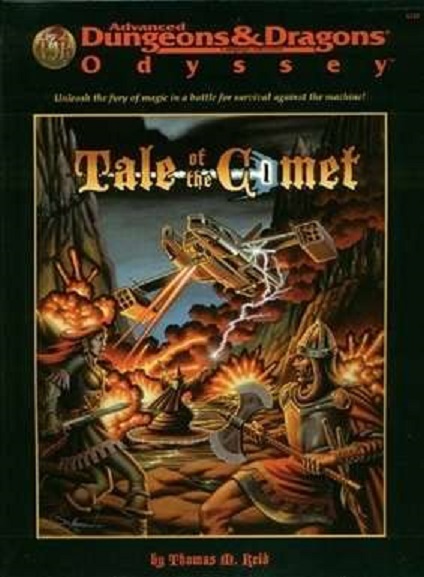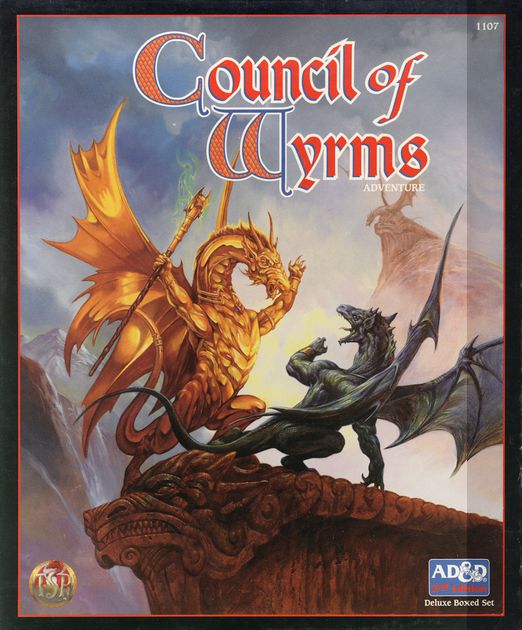And we are here again. When I started talking about the many D&D settings it was a simple Twitter thread. I was trying to list all the official D&D published D&D settings. I was trying to figure out what Wizards of the Coast might release next as a setting in 5e. They had already released a large amount for Forgotten Realms and had just announced Ravnica and Eberron books. I thought I could list them all off as I had been around for most of them.
I managed to get most of the big ones. The ones I missed were the sub-settings (subsets of the larger settings), meta-settings(settings that crossover to other settings) and the micro settings. Micro settings are small tightly contained campaign settings with little thought given to a larger world.
Micro-settings are actually kind of rare in the long history of D&D. The small self-contained setting would seem to be easier to develop and publish, so you would expect it to be more common than it is but the larger, more complete world building ends up being more popular. I blame Tolkien.
JRR Tolkien’s Middle Earth was a large expansive world. It had myths and legends within itself. It had a deep history and reasons for the various events unfolding. It felt like a secondary world and that level of attention made it tremendously popular. For fans, it felt like there was always another layer peel away. Game world designers (and other fantasy writers) tried to recapture that magic, so we end up with Forgotten Realms or Dragonlance. The small setting of just a city, an island, or remote valley by itself never really found traction in the official products.
It became easier to take that one off idea someone had for a small setting and just fold it into the details of another larger established setting. The things that might have ended up being a micro setting end up being an island chain in Mystara, or an isolated desert kingdom in the Realms.
So, here are the few small, stand-alone, micro settings. These could all easily be dropped into just about any setting.
Tale of the Comet (Aston Point and others)

The Odyssey line from TSR was created to be a line of micro settings. They had realized there were problems with having so many large settings out there and decided to introduce a line of products you could drop in any world. Tale of the Comet was the first in the line. The book is an adventure starting in Aston Point, going through a portal and ending up in a science fiction setting. Science fiction has long been an element of D&D and this is not the first time a published adventure brought D&D characters to a sci-fi world. It is also not coincidental that this was released around the time Alternity was released. It could be seen as a lead in a product to that science fiction game.
Beyond that slight tie in to Alternity, there was no further appearances of this setting Aston Point does not appear in any other setting. The Odyssey line was never intended to be part of a particular setting, even if people did often assume it was in Mystara or the like.
Jakandor

Jakandor is odd. It was part of the Odyssey line but was not connected to the Tale of the Comet. The Jakandor:
Jakandor was the brain child of veteran designer, Jeff Grub, though much of the final work was done by Kirk Botula and Dale Donovan. It was conceived of as a clash of cultures campaign. The barbarian Knorr arrive on an island which also has the necromancer dominated Charonti. All of this would take place on the island of Jakandor.
The setting was a bit pulpy with classic noble savages (think Vikings who settled in North America) on one side and misunderstood necromancers on the other. There was also supposed to be a fourth book, a novel written by Jeff Grubb and published as part of the line. This book was written and edited but never released. It probably never will be.
Thunder Rift

Thunder Rift could have been counted as a sub-setting of Mystara. It was intended to be used using the box set D&D rules. The writers who worked on it even thought it might be set in Mystara, but they notably had different ideas on where.
That said, it was never explicitly placed in Mystara and the original design goal was to be a setting you could drop into any other setting. The Thunder Rift was a canyon that had its own perils and a few settlements and was surrounded by nearly impassible mountains on all sides.
Given when it was published, it is a surprisingly old school setting. It mainly focuses on classic D&D tropes. There were a few adventures published for the setting, including some solo play style adventures. Beyond that, there was nothing particularly notable or unexpected in the setting and it ended with little fanfair.
Council of Wyrms

Council of Wyrms was a boxed set released, again, as a setting you drop into any other setting. The particular exciting difference on this one was that it was designed to allow PC’s to play Dragons, and various dragon related options. There was never any intention of releasing supplemental books for the setting and it was a stand alone option for D&D.
The setting did get revisited, though. There was a revised set of rules in later 2nd edition. The rules were regarded as being better suited for high level play which has been explored in various editions, even if the setting didn’t really survive past 2nd edition.
In my personal experience, this boxed set got brought up by a lot of people I have gamed with over the years. The rules, if not the setting itself, were compelling to many people. The Idea of playing dragons can be very compelling.
Ghostwalk

Ghostwalk is the only 3rd edition setting on this list. It was originally made as part of an internal initiative come up with a new setting for 3rd edition. For various reasons, it actually sat on the shelf for a couple of years before it was put into the release schedule, so it didn’t come out untill 2003.
The setting focused on ghosts and a city of the dead called Manifest. The living PC’s could conceivably die and come back as the ghost version of themselves. The ghosts could be corporeal in Manifest, hence why it was the center of the setting. There are other nations mentioned and described, but the bulk of the detail is about the city of the dead.
Ghostwalk came along late enough in the 3e era to not last that long. They never really got any supplements beyond some web exclusive pdf rules updates. It did not make it into any future editions and often gets forgotten when people are talking about settings.
Wrapping up
So we have hit the micro-settings. I didn’t include things like the article in dragon describing how to adventure in the 20th century. I also didn’t include Pelinore from TSR UK or any of the third party items. Only included the ones officially released as a product from TSR or Wizards of the Coast.
My next post will be about the officially licensed settings published as D&D by the D&D publishers of the time. I am sure that there were no shenanigans in there at all.
